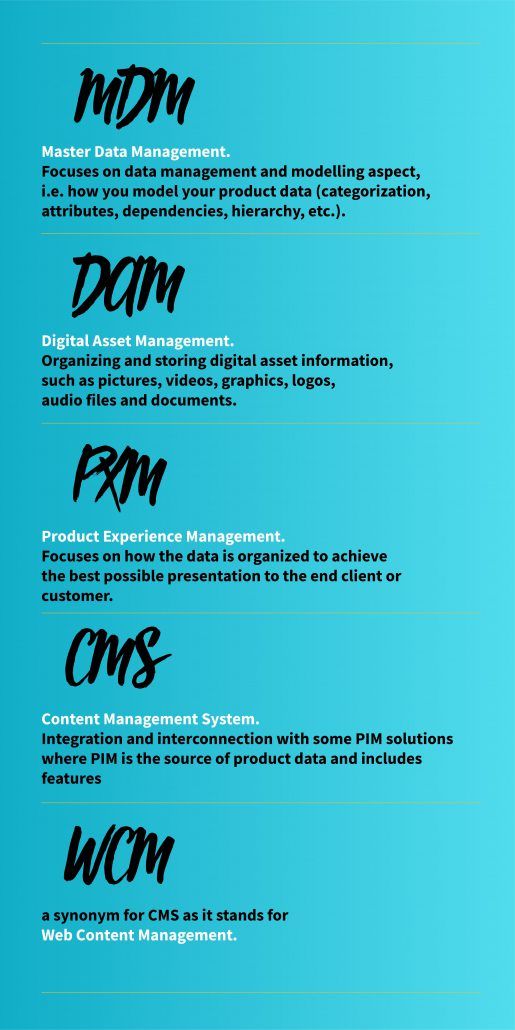In today’s digitally-driven landscape, ensuring seamless communication between various systems is vital. Whether you’re running an online store, managing inventory, or handling customer relations, the synchronization of data across platforms can greatly influence efficiency and accuracy. One frequent challenge many face is how to flawlessly integrate and synchronize data between two distinct systems. In this post, I’ll discuss the intricacies of implementing such synchronization. While I’ll be using Pimcore and Magento 2 as specific examples, the principles and strategies outlined can be applied universally, regardless of the systems in question.
PIM advantages in real life
Imagine that you need to properly prepare, edit or enrich a big set of product data, be it for your next product catalog, the latest promotional flyers or the new digital marketing campaign for your online shop.
In an ideal world, all your products would be accompanied by catchy descriptions and beautiful photos, the product categorisation would be a set up and all the product attributes would be neatly organised in sets based on product categories or specific features.
However, in reality, your product data is spread across several Excel sheets coming from various departments and having several owners, each with their own version of the file. The photos and descriptions are often missing as many of the suppliers only provide SKU data and pricing lists … Yes, this is the real scenario. But there’s no need to despair.
PIM: a set of tools and processes for collecting, editing and managing information about the products you own.
Product Information Management or PIM is here to help you solve such issues and neatly organise your chaotic product information.
It usually consists of a centralized database that stores the product data model, product data itself as well as optimization and collection tools for data enrichment and distribution through relevant channels – usually e-commerce, print, social channels.
As a concept, PIM has entered the mainstream world of marketing, e-commerce and logistics a few years ago. And it has soon enough become irreplaceable.
PIM dictionary
The abbreviation PIM is connected with, further explained by or replaced with several similar concepts, such as MDM, DAM, PXM, etc. It is also closely related to e-commerce terms, such as CMS, WCM and several others. To help you out, we made a handy dictionary that will explain the differences and similarities between all these names and make the situation a bit clearer.

Benefits of PIM solutions
Now that we understand the basic concept of Product Information Management, we can delve deeper into its main uses and explain how PIM can be of immense added value to the end user.
Before the introduction of PIM, the enrichment of product data was almost always a messy and chaotic task. The reason for this can be found in the fact that Excel sheets, MS Office documents or even databases or ERPs – while absolutely useful to a certain extent – are not the best solution for organising large chunks of information.
As they are not specialised for such a task, the result of their usage often comes in the form of time delays, inconsistent data or missing information. In a world where content is king, this can have immense negative effects on conversions and, subsequently, on your finances.
Value propositions of PIM solutions
Optimized data collection
Streamlined collaboration and approval workflows
Centralized enrichment and data storing
Multichannel data distribution
Here are some of the case studies explaining the benefits of the PIM solutions.
What kind of companies would mostly benefit from using PIM solutions
Product Information Management is perfect for companies who have:
- portfolios with thousands of products with complex hierarchy, variations or attributes
- many suppliers, so they promote and sell goods or services through multiple channels.
The benefits of PIM can be very similar for either small businesses or large enterprises. Relying on a well-organized system with strong tools for batch actions users, PIM can save your precious time while the customers can enjoy a much better user experience.
How exactly does PIM work
The process begins when Product Information Management collects all available information from different possible sources like the company’s ERP or the supplier’s databases. Different PIMs support different formats of imported data but generally they all support Excel and CSV.
When the data and multimedia files have been imported, they can be organized into categories and subcategories relating to the chosen products. You can also create a preset of products’ attributes, which makes the descriptions more systematic and easier to prepare. At the same time, images, videos and PDFs can easily be linked to the relevant products.
Some PIMs also offer a tool for editing photos while others come with an entire Digital Asset Management (DAM) already integrated.

Every Product Information Management system is able to create product catalogs for various channels at once. Companies who sell through different channels e.g. webpage, mobile app, Amazon or even printed catalogs, can easily promote their products through all those channels.
PIM makes it possible to give different access rights to every employee or any other party, which means that suppliers, for example, can enter the program themselves but only contribute or edit photos, videos and product descriptions or help to organise products and create catalogs. Translators or copywriters can only edit texts and descriptions in their chosen languages etc.
The use of PIM is beneficial for suppliers, as they can add products and media directly to the program itself while the company employees can save time and edit data in a more efficient and organised way, especially as they can all work at the same time, which makes collaboration that much easier.
Of course, this system also benefits the end users as they can enjoy a much better online shopping experience due to consistent names and product descriptions with appropriate photos and videos.
How exactly does PIM work
Optiweb is a partner of Pimcore, which is an open source software. This means that the source code can be inspected, modified, adjusted and distributed by anyone. In contrast, the term closed source means that only the code authors have the right to inspect, modify, adjust and distribute the code.
The terms open source and closed source are often thought to be synonymous with free or paid software, but these concepts should not be confused as they do not mean the same. Both open and closed source software solutions can be either free of charge or paid.
Using open source software has some considerable advantages: Along with the possibility of free access, there is no risk of getting “locked-in”, the programs are constantly improved by strong communities while businesses can adapt it to their own needs.
How to approach a PIM integration project
Usually, each PIM project starts with reaching out to us in the form of a request for a proposal and price estimation.
After our review of the inquiry, we propose a short introductory call to get a more personal impression of your company, to answer a few basic questions and then propose next steps.
These next steps usually include a preparation of a demo presentation of a PIM solution so you can get a better understanding of how your system might look.
After this, it gets more technical – we break down the integration process into several steps. The most important step is usually the discovery process – we dig deep into your processes, current data models and technology stacks to give you an informed proposal on how to implement a PIM solution. The outcome of a discovery process is a technical and functional specification with a detailed timeline and activity plan.
After that we usually go into development. This process varies a bit on your timelines, complexity of technology stack and processes, budget and other factors.
Now it’s time for a painless, but the most important step
Get in touch with us and we will gladly help you start with your PIM integration.





